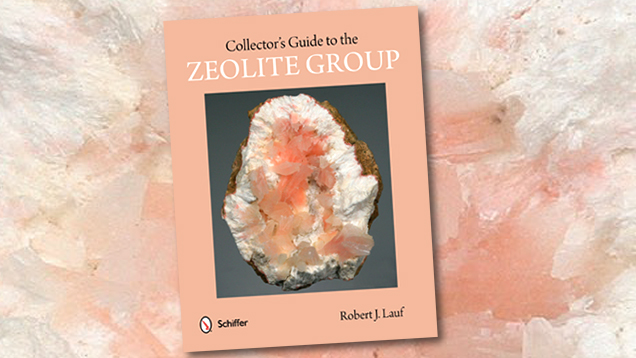Books: Collector’s Guide to the Zeolite Group

Zeolites are structurally complex and are distinguished by their ability to exchange cations with surrounding solutions. They are immensely important for industrial purposes as sorbents, catalysts, and molecular sieves. While these minerals occur naturally, they are also produced as “designer” synthetics on a large scale. Over 200 “frameworks” of open cavities and channels formed by tetrahedral oxygen atoms surrounded by cations have been identified; of those, over 40 are natural occurrences. Zeolites are used in agriculture (animal feed, odor control, pet litter), horticulture (soil conditioners and growth media), and water purification. They are also act as carriers for pesticides and fungicides, and as gas and oil absorbents.
The introduction briefly discusses the research and literature on zeolites, citing a few detailed examples of use. Through cation change, naturally occurring cliniptolite can be used to filter radioactive cesium from wastewater at nuclear power plants. Zeolites can be used as “molecular sieves” to separate molecules with differing cross sections (i.e. branched and unbranched hydrocarbons) in a vapor stream. The structure and morphology section tries to clearly lay out the structural chemistry and taxonomy of the group, but the book quickly goes beyond the scope of knowledge, comprehension, and expertise of the average gemologist or collector. The structural types are illustrated with diagrams that enhance the understanding of the unique framework structure and the functional “channels” and “cages.” The following chapter outlines zeolite’s formation and geochemistry, pointing out the environments where specimen-quality rough may be sourced, versus massive industrial-quality deposits.
The strength of the book is the alphabetized section on each type of zeolite, illustrated with superbly formed examples. The photography is also breathtakingly artistic. If the fascinating structure and utility of zeolites does not intrigue a budding collector, the pure aesthetics of the specimens surely will. Each entry describes locality information and associated minerals; a few include additional diagrams to illustrate the framework structure and different examples of crystal morphology.
The book concludes with a comprehensive and somewhat overwhelming list of references, but the reader is guided by the author’s annotations. Lauf also highlights a few resources of notable interest to those starting their own collection.
Like other books in the Earth Science Monograph Series, this volume is not a valuation guide, nor does it give an indication of the commonness or rarity of particular types of specimens. It serves as an excellent primer to the unique structure and function of this unique mineral group. In addition, the abundant high-quality illustrations of superb specimens will make this volume appealing even to an “armchair” mineral collector.



